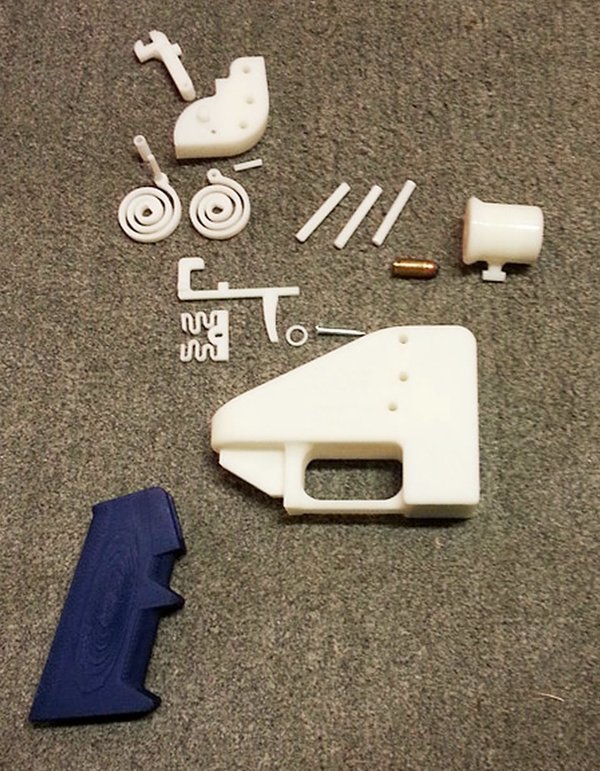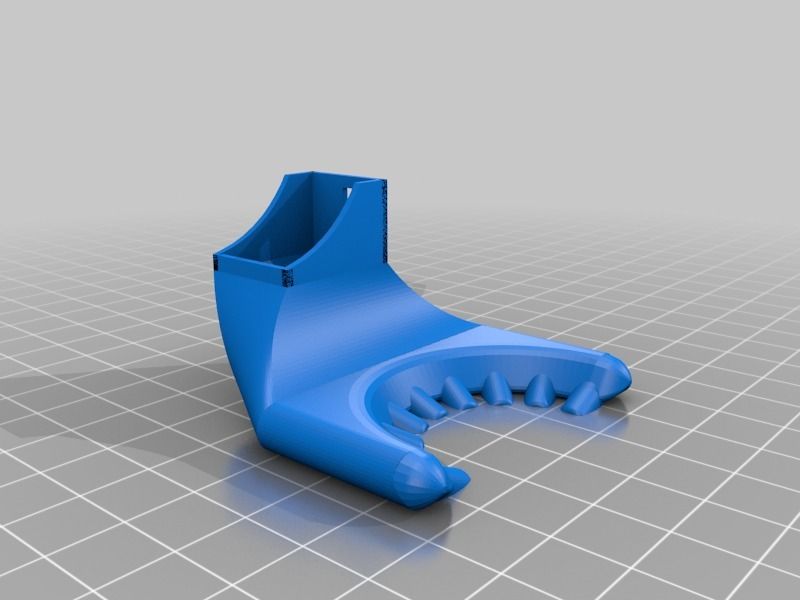3D printed gun law
What Are 3D-Printed Guns, and Are They Legal?
For decades, weapons manufacturing has been the domain of arms industry heavyweights: Glock, Sig Sauer, Remington, Sturm, Ruger & Co. Making a gun from scratch at home required thousands of dollars of machining equipment and years of engineering expertise.
But in recent years, that has begun to change. Advancements in 3D-printing technology have yielded increasingly reliable 3D-printed firearms, many of which require no federally regulated components to function. Below, we break down the basics of plastic, 3D-printed firearms, and the controversy generated by the swelling movement to deliver them to the masses.
What is a 3D-printed gun?In the simplest terms, it’s any firearm that includes components manufactured with a 3D printer.
But 3D-printed guns vary a lot. Some models — like the 3D-printed gun company Defense Distributed’s “Liberator” — can be made almost entirely on a 3D printer. Others require many additional parts, which are often metal. For example, many 3D-printed gun blueprints focus on a weapon’s lower receiver, which is basically the chassis of a firearm. Under federal law, it’s the only gun part that requires a federal background check to purchase from a licensed dealer. To subvert regulators, some people print lower receivers at home and finish their guns using parts that can be purchased without a background check — metal barrels, for example, or factory buttstocks. Many gun retailers sell kits, which include all the components necessary to assemble a gun at home.
Advances in printing technology have driven the price of 3D printers down — they’re now around $200 on Amazon — and gun groups offer guides for getting started. These developments have lowered the barriers to entry for those in search of untraceable guns, which have turned up at crime scenes with increasing frequency over the past few years.
The process still remains more involved than most methods of obtaining a firearm, though.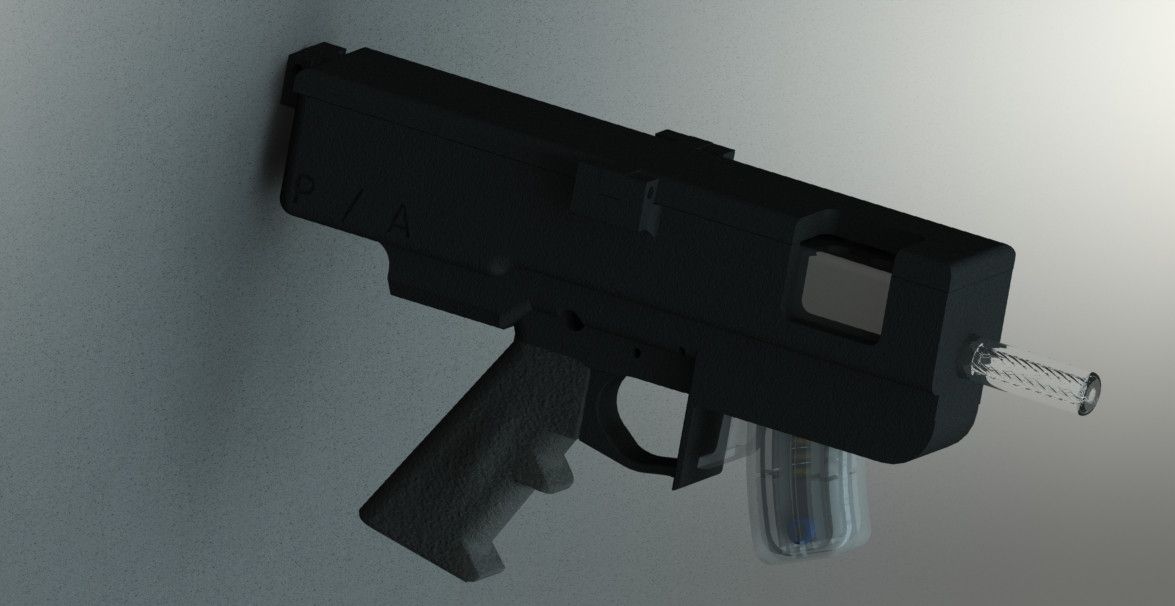 For instance, 3D printers require meticulous setup — the component that extrudes plastic must be calibrated, software must be downloaded to convert designs into 3D-printable slices, and the printer must undergo a slew of upgrades to reliably print weapons parts, which themselves require precise construction to ensure they can contain the explosion from a gunshot.
For instance, 3D printers require meticulous setup — the component that extrudes plastic must be calibrated, software must be downloaded to convert designs into 3D-printable slices, and the printer must undergo a slew of upgrades to reliably print weapons parts, which themselves require precise construction to ensure they can contain the explosion from a gunshot.
Because 3D-printed guns are made outside traditional supply chains, and don’t require background checks, they’re effectively invisible to law enforcement agencies. They are a form of ghost gun: unserialized, and unable to be traced if recovered by law enforcement.
There isn’t good data on the number of 3D-printed firearms that have turned up at crime scenes, though state attorneys general opposed to the technology insist that some have been recovered. On a few occasions, crimes involving the guns have made headlines. In February 2019, police arrested a Texas man after he was found test-firing a 3D-printed gun in the woods. He was prohibited from purchasing firearms and had a hit list of lawmakers on him.
He was prohibited from purchasing firearms and had a hit list of lawmakers on him.
Of particular concern to many law enforcement agencies are guns that can be completely 3D-printed at home without metal components. Politicians and law enforcement professionals fear that such guns would be able to evade metal detectors, and thus slip into places where firearms are prohibited, like airports or government buildings. At present, these fears are largely unfounded — 3D-printed gun designers have yet to develop an alternative to metal bullets, and security officials say that X-ray detection in place alongside most metal detectors can identify the outline of 3D-printed firearms with ease. Indeed, Transportation Security Administration officers have seized 3D-printed firearms at airports on several occasions.
Still, the weapons’ lack of traceability has already caught the attention of terror groups, according to Mary McCord, a former U.S. attorney and prosecutor in the Department of Justice’s National Security Division.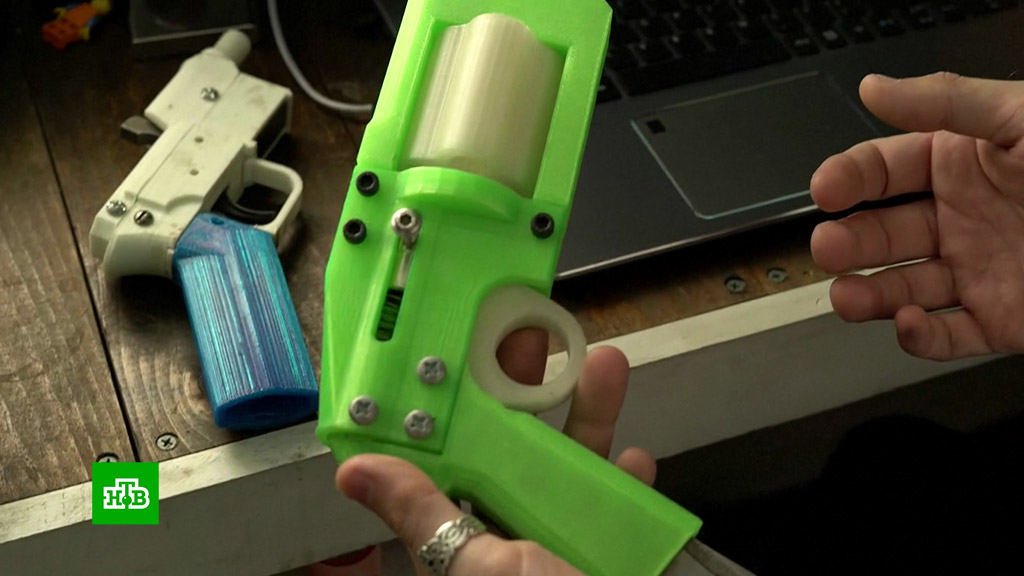 “We know from a counterterrorism perspective that there’s great interest among terrorist organizations in being able to have workable, usable, efficient, functioning 3D-printed weapons.”
“We know from a counterterrorism perspective that there’s great interest among terrorist organizations in being able to have workable, usable, efficient, functioning 3D-printed weapons.”
In most cases, yes. Federal law permits the unlicensed manufacture of firearms, including those made using a 3D printer, as long as they include metal components.
In the absence of federal regulation, a handful of states have taken their own steps to clamp down on the creation of homemade guns. In California, anybody manufacturing a firearm is legally required to obtain a serial number for the gun from the state, regardless of how it’s made. In New Jersey, you are supposed to obtain a federal manufacturing license before 3D-printing a gun. The state also criminalizes the manufacture, sale, or possession of undetectable firearms, and made it illegal to purchase parts to make an unserialized gun. Several states — including New Mexico and Virginia — are considering bills that would enact similar restrictions.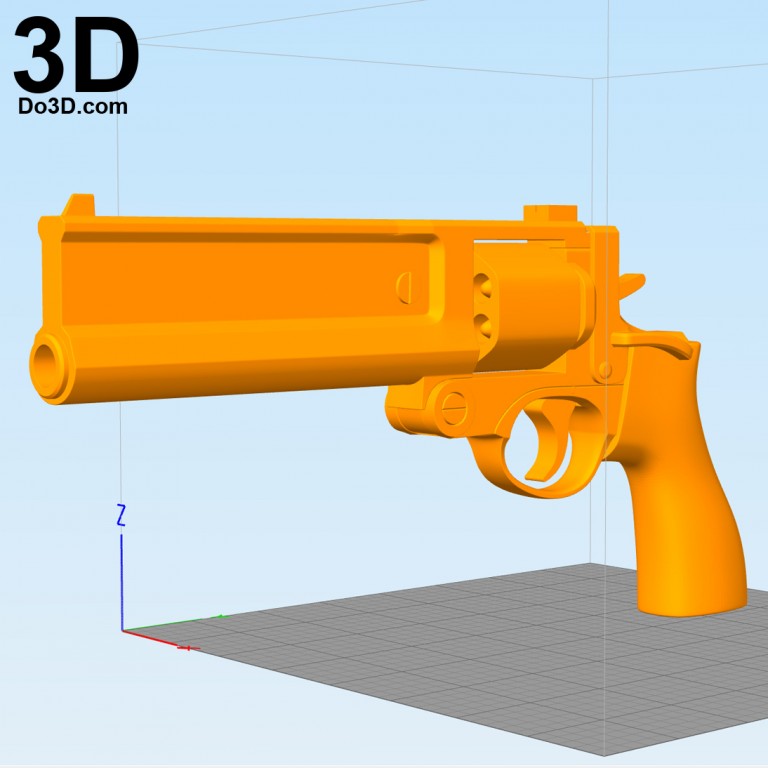
The legality of sharing the files required to print guns and gun components is murkier territory. No federal legislation bans the practice. But in 2013, the State Department ruled that releasing blueprints online violated arms export laws. In 2018, after a lengthy court battle with Defense Distributed over the guidance, the State Department settled, and agreed to permit the files’ release. But before the prohibition was lifted, a coalition of states sued to keep it in place — and won. Now, gun groups intent on sharing the files online have exploited a loophole in the State Department’s policy, which allows for the distribution of blueprints exclusively to U.S. residents. Defense Distributed maintains it has established a vetting procedure to ensure only U.S. residents are able to download them.
In 2019, the Trump administration transferred oversight of gun exports from the State Department to the Commerce Department, which would have rolled back restrictions on releasing 3D-printed gun blueprints.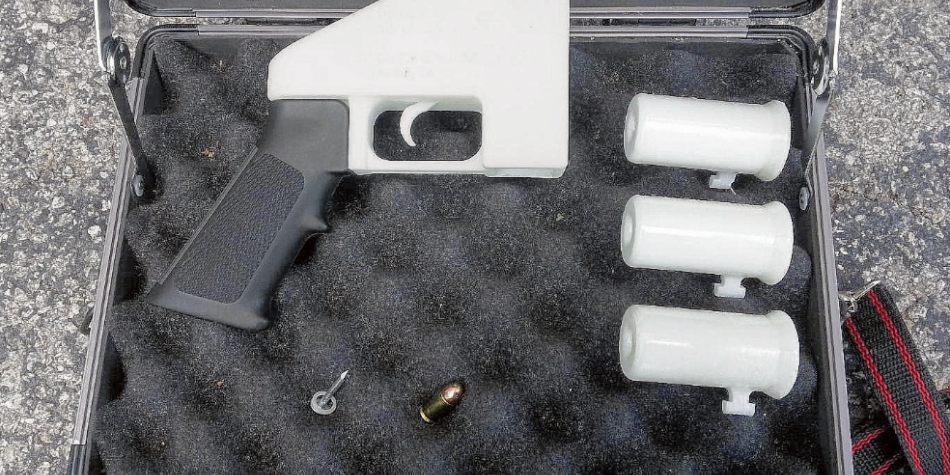 But a second suit filed by the coalition of state attorneys general has kept oversight of the files with the State Department, pending future litigation.
But a second suit filed by the coalition of state attorneys general has kept oversight of the files with the State Department, pending future litigation.
New Jersey Attorney General Gurbir Grewal is a plaintiff in the case. “If a company like Defense Distributed can simply sell printable [gun blueprints] to their customers without running the usual required background checks to make sure someone’s not a criminal, it would blow up the entire regime of firearm laws that we have in this country,” he said.
In 2019, after Grewal sought an injunction to block Defense Distributed from releasing files to New Jersey residents, the company countersued. It alleges that the blueprint files are a form of speech, and that Grewal’s effort to block their release violates the First Amendment. The case has yet to go to trial.
Who is printing guns — and why?The first 3D-printed firearm to make a splash in the popular consciousness was the “Liberator” — a near fully plastic gun designed by a self-described anarchist and ghost-gun advocate named Cody Wilson.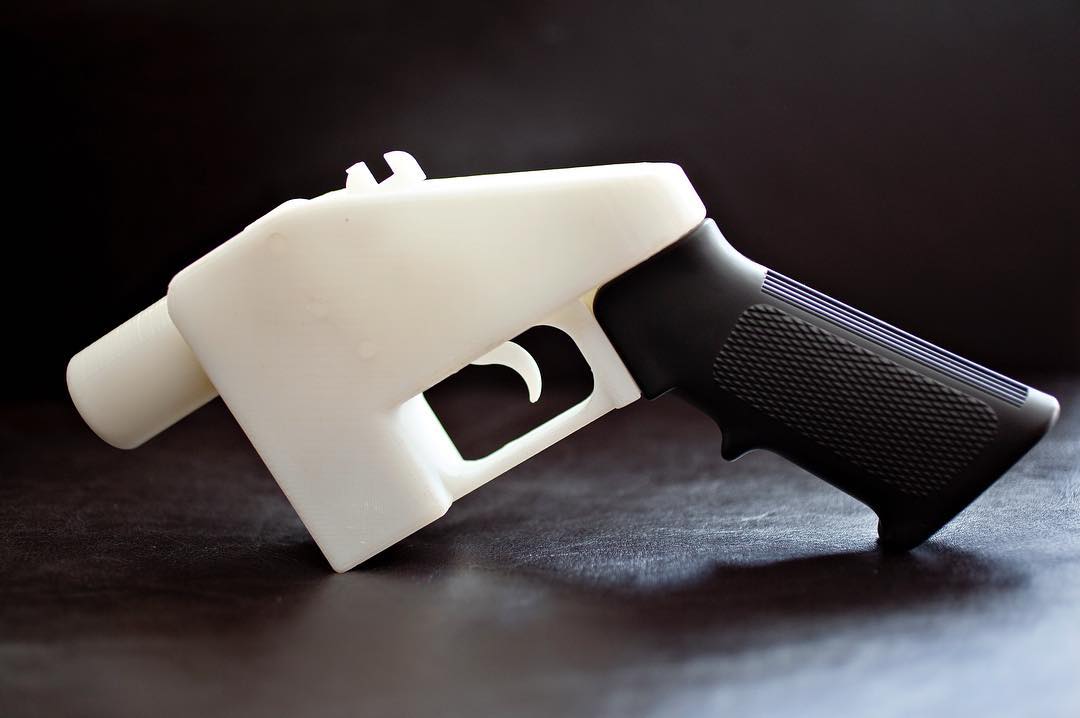 (Designs for the Liberator call for a small steel block to be sealed inside the plastic in order to comply with federal law.) Wilson founded Defense Distributed to advance and share the technology, and has initiated many of the group’s highest profile legal battles. In 2019, Wilson was sentenced to probation and ordered to register as a sex offender after soliciting sex from a minor.
(Designs for the Liberator call for a small steel block to be sealed inside the plastic in order to comply with federal law.) Wilson founded Defense Distributed to advance and share the technology, and has initiated many of the group’s highest profile legal battles. In 2019, Wilson was sentenced to probation and ordered to register as a sex offender after soliciting sex from a minor.
Though Wilson’s is the best-known and formally recognized gun printing “company,” the practice is mostly advanced by informal collectives across the internet. These groups, like Deterrence Dispensed and Fosscad, gather anonymously in chat rooms and on social media platforms to crowdsource the development of new gun designs and spread them across the web. They have thousands of members, but remain mostly decentralized, making it difficult for technology companies or law enforcement agencies to police them.
Over the past two years, however, the groups have run up against censorship policies at major tech platforms, many of which prohibit weapons content.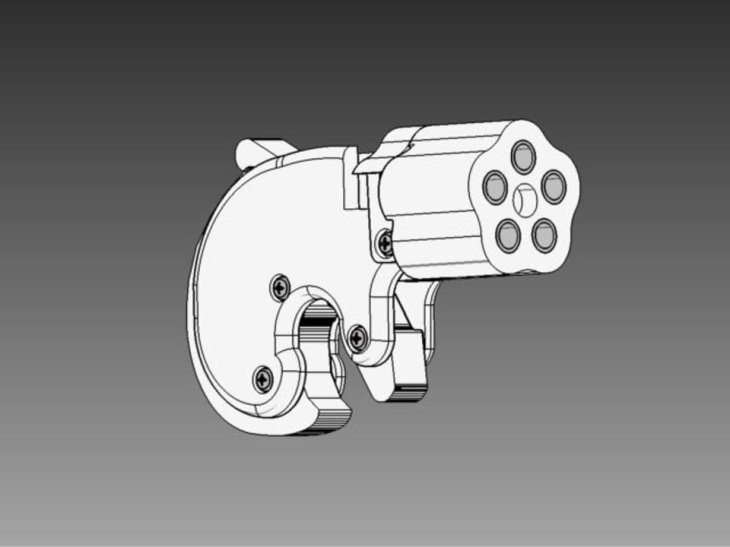 As a result, they’ve been forced to increasingly obscure corners of the internet. Most recently, the operations hub for most of the 3D-printed gun groups — an encrypted chat and file-sharing platform called Keybase — pledged to remove all weapons-related content, and told the groups they would be banned.
As a result, they’ve been forced to increasingly obscure corners of the internet. Most recently, the operations hub for most of the 3D-printed gun groups — an encrypted chat and file-sharing platform called Keybase — pledged to remove all weapons-related content, and told the groups they would be banned.
Proponents of the technology fall into several different camps. Some, like Mustafa Kamil, a creator of 3D-printable guns based in Romania, and a member of the Deterrence Dispensed team on Keybase, think that concerns over homemade weapons are overblown. Gun printing, he says, is mostly the domain of hobbyists like himself: technical experts interested in tinkering and engineering. To 3D-print a gun: “you need to have enough money to buy a printer. Then you need enough expertise and experience to know how to use the printer. If your axis is off by 0.15 millimeters the gun isn’t going to work,” he said. “To buy a black market firearm would be much easier.” Kamil said he’s owned 32 printers and completed two apprenticeships with gun manufacturers.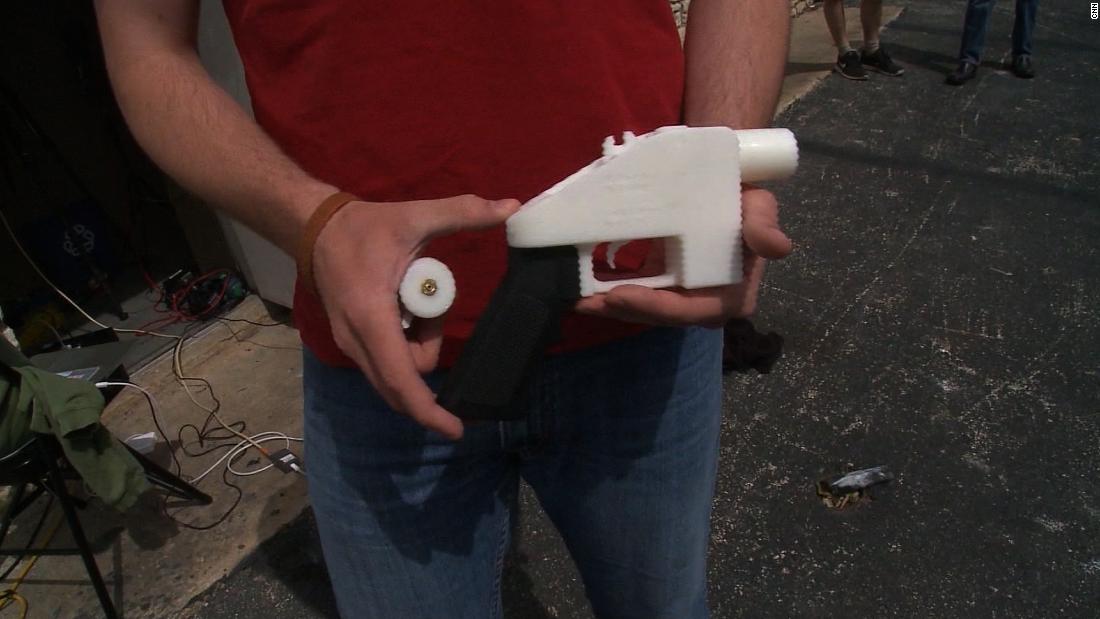
Others see the potential for armed conflict with the government as the driving force behind their creations. Members of Deterrence Dispensed and Defense Distributed have fashioned a brand out of this perceived threat, adopting popular Second Amendment slogans like “Come and Take It,” “Live Free or Die,” and “Free Men Don’t Ask.” Leaders of the groups share a deep conviction that gun ownership is the only way to ensure freedom: In an interview with Popular Front, a conflict journalism outfit, the founder of Deterrence Dispensed — a man who goes by the username jstark — continuously pointed to the threat of government tyranny as a justification for creating 3D-printed guns and distributing their blueprints. “Just look at the Uighurs in China,” he said, referring to the ongoing genocide of the ethnic minority. “Just look what’s happening to them. No one’s helping them. Nobody does shit. You know what would help them? If they were armed. That would be a deterrence.”
To jstark, identical threats exist anywhere where civilians are largely unarmed, including in Europe, where he lives. When asked if he would fight police who tried to confiscate his guns, he was frank: “Basically, yes. Live free, or die. These are not empty words.”
When asked if he would fight police who tried to confiscate his guns, he was frank: “Basically, yes. Live free, or die. These are not empty words.”
While politicians and law enforcement agencies have dubbed the advocates of 3D-printed firearms extremists, the movement has no unifying political ideology. Jstark, for his part, said in the Popular Front interview that Deterrence Dispensed has no tolerance for people who wish to harm others: “If they do show through [their actions] that they’re extremists, racists, islamic terrorists — then we would kick them out immediately,” he said. He did not respond to multiple requests for comment.
The alarmism about about looming government tyranny has attracted groups eager to ignite government conflict, particularly in the U.S. Members of groups connected to the boogaloo, a loose-knit coalition of anti-government extremists that advocates a violent civil war, have seen 3D-printed gun advocates as allies in an overlapping struggle.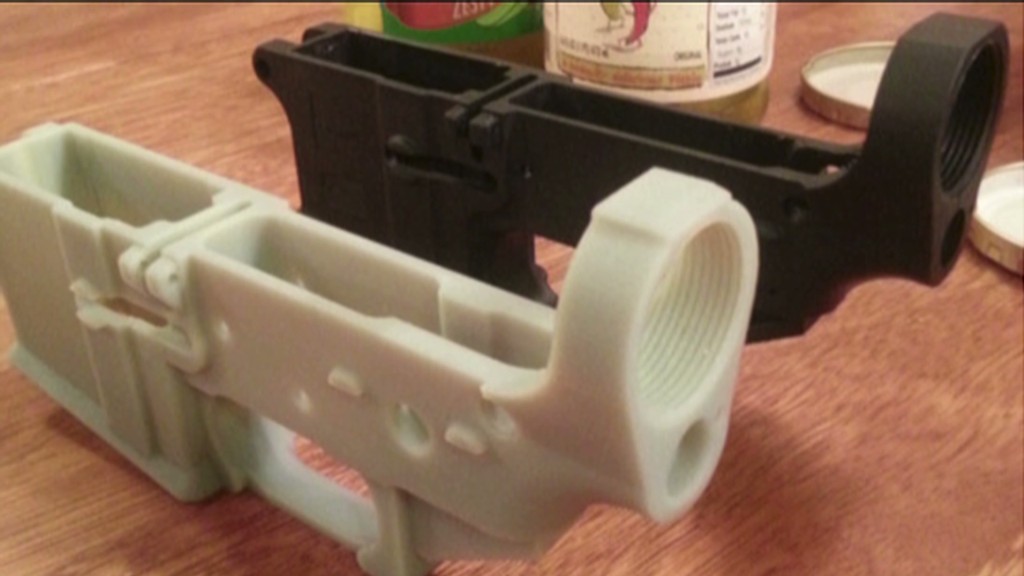 Last summer, Megan Squire, a professor at Elon University, tracked online boogaloo-connected groups as they navigated crackdowns from social media platforms. Many ended up on Keybase, drawn by the large and growing 3D-printed gun community.
Last summer, Megan Squire, a professor at Elon University, tracked online boogaloo-connected groups as they navigated crackdowns from social media platforms. Many ended up on Keybase, drawn by the large and growing 3D-printed gun community.
In early April, Deterrence Dispensed released blueprints for a printable auto sear — a component that can be used to turn a semiautomatic rifle into an illegal, fully automatic firearm — called the “Yankee Boogle,” an apparent boogaloo reference. In September, two boogaloo adherents were charged for allegedly attempting to sell auto sears to representatives of Hamas, the Islamist extremist group. In court documents, prosecutors alleged that one of the defendants in that case said he obtained the auto sears from a supplier who 3D-printed them. In a separate case, federal prosecutors charged a man from West Virginia with 3D-printing auto sears and selling more than 600 of them online, including to several boogaloo adherents. One man who bought the 3D-printed auto sears is accused of killing a police officer and a security guard in California. It is unclear if any of the auto sears used in these crimes were designed by Deterrence Dispensed.
It is unclear if any of the auto sears used in these crimes were designed by Deterrence Dispensed.
Correction: An earlier version of this article highlighted a case in which police in Rhode Island said a suspect used a 3D-printed gun in a murder. While police initially made that claim, an analysis by the state crime lab later ruled the method of manufacture “undetermined.” The story has also been updated to include that Defense Distributed’s “Liberator” gun model includes a small metal component for federal compliance.
Biden issues new rule to crack down on 'ghost guns,' 3D printing industry responds
0Shares
Legal experts and gunmaking hobbyists have cast doubt over the relevance of US President Joe Biden’s upcoming ‘ghost gun’ reforms to the 3D printing industry.
Soon to be introduced in the form of ‘Final Rule 2021R-05F,’ these changes will see the US Bureau of Alcohol, Tobacco, Firearms and Explosives (ATF) alter how it defines a firearm. By broadening this meaning to include unfinished frames and receivers, the ATF is now set to mandate that these feature serial numbers too, in a move designed to limit unmarked gun access, with touted 3D printing implications.
By broadening this meaning to include unfinished frames and receivers, the ATF is now set to mandate that these feature serial numbers too, in a move designed to limit unmarked gun access, with touted 3D printing implications.
When contacted by 3D Printing Industry, however, Youtuber Sean Aranda (aka 3D Print General), Erich Pratt, Senior VP of Gunowners of America, and Michael Weinberg, Executive Director of the NYU School of Law’s Engelberg Center on Innovation Law and Policy, have indicated that this may not necessarily be the case.
In particular, Weinberg, whose institute specializes in exploring tech policy ramifications, has highlighted how the changes don’t address 3D printing specifically, thus they could actually be seen as a welcome move away from the traditional media hype around printed guns.
“My primary concern with the earlier proposals was that they singled out 3D printing as a manufacturing method,” explained Weinberg. “This new proposal addresses privately-made firearms regardless of the specific tools and technologies used to make them.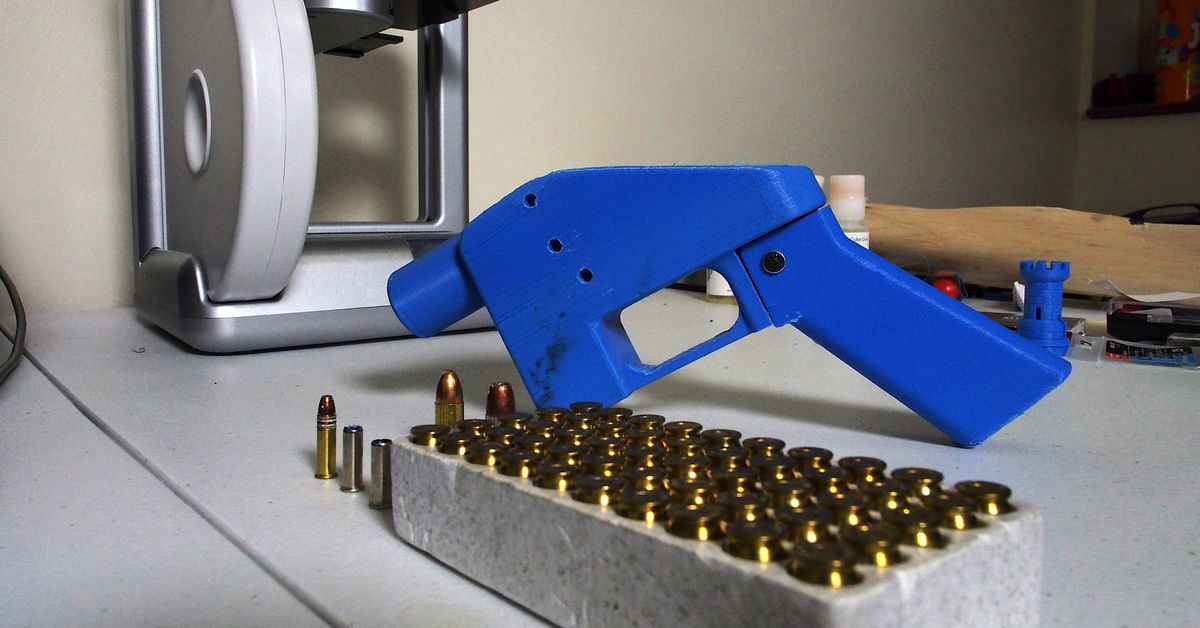 I think this new rule is a win for the 3D printing community.”
I think this new rule is a win for the 3D printing community.”
What are ‘ghost guns’ and why is 3D printing relevant?
‘Ghost gun’ is a blanket term used to describe any unserialized, privately-made firearm. These can either be bought as ‘buy build shoot’ kits and assembled, or produced at home using 3D printing or other technologies. At present, doing so is perfectly legal in the United States, providing that any resulting firearms are made for personal use, with a license being required to sell or distribute them.
However, US lawmakers are becoming increasingly concerned that anyone can acquire and assemble such a weapon without having to undergo any of the checks required to obtain a regular firearm. In fact, the White House claims that many law enforcers are now struggling to trace unmarked guns as part of various criminal investigations, hence it says the Biden administration has been forced into action.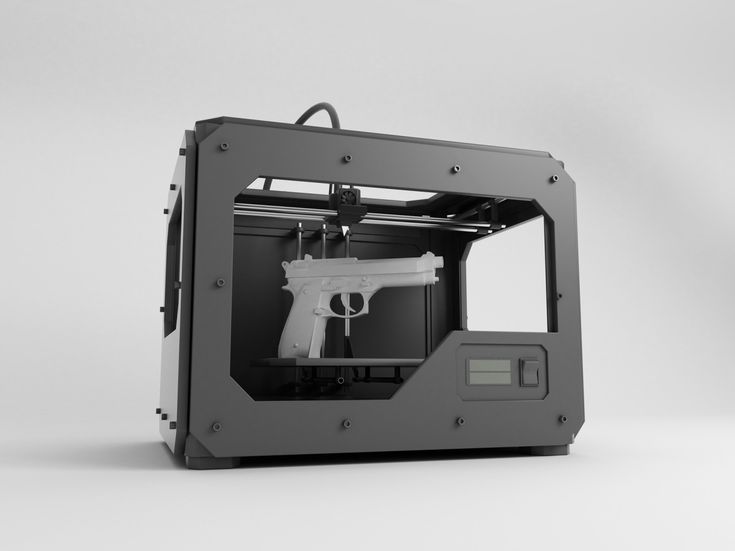
Yet, the White House also adds that the upcoming changes necessitating “ghost guns made from individual parts, kits or by 3D printers” be marked moving forwards, are targeted specifically towards “licensed firearm dealers and gunsmiths,” leading Aranda to question the impact they’ll actually have on hobbyist gunmakers.
“I’m not an attorney, but from my understanding, this does not affect 3D printed guns whatsoever,” said Aranda. “This ruling seems to be only focused on kits with P80 frames and jigs, and would not have anything to do with manufacturing your own firearm from scratch (aka 3D printing them). You can still purchase all of the parts required to complete your 3D printed firearm the same as you were able to before this ruling.”
Weinberg, on the other hand, who has a storied history in both 3D printing and examining related policy, says the technology could well be affected, but the means of manufacturing shouldn’t be the defining factor in restricting home-made guns.
“If a policymaker was concerned about ‘ghost guns’ or guns made by individuals, it should not matter exactly what technology is used in their manufacture,” added Weinberg. “I will admit that I was not thrilled that 3D printing is still being used to frame discussion about the larger issue. That being said, the most important thing is that the technology is not treated differently in the rules themselves.”
The entrance to the ATF’s headquarters. Photo via the ATF.Challenging Biden’s Final Rule
Biden’s Final Rule effectively changes the ATF’s definition of a firearm to take into account the tech advances that have taken place since this was legally defined back in 1968 and 1971. Significantly, the revised definition now includes incomplete, disassembled, and nonfunctional frames or receivers, which have reached a stage in their manufacture where they may “readily be made to function.”
As a result, once the change comes into effect (set to be 120 days after it appears in the Federal Register), firearm manufacturers and resellers that buy or build their own guns (3D printed or otherwise) will have to mark them.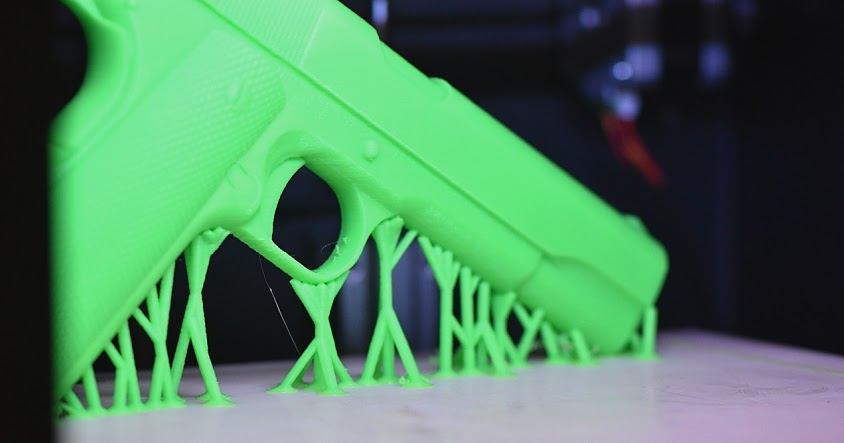 For those who have already created ‘privately made firearms,’ they’ll have until sixty days after the rule is introduced to do so, whether this be achieved privately or via a gunsmith.
For those who have already created ‘privately made firearms,’ they’ll have until sixty days after the rule is introduced to do so, whether this be achieved privately or via a gunsmith.
The idea being, that in future, if anyone were to buy one of these firearms and commit a crime with it, they could easily be identified. Speaking to 3D Printing Industry, however, Erich Pratt, Senior VP of Gunowners of America, has raised doubts about the validity of White House claims that ghost guns are the “weapon of choice” for criminals, emphasizing that “registering guns doesn’t prevent crime.”
“The term ‘ghost guns’ is just a phrase that anti-gunners use to demonize privately-made firearms,” said Pratt. “This President is not as interested in protecting public safety, as much as he wants to implement a radical gun control regime. Serialization is not designed to stop criminals, but it is intended to register the law-abiding, which history shows is the first step toward confiscation.”
The submachine gun that was incorrectly reported as being 3D printed by several media outlets in 2016. Photo via the Sun.
Photo via the Sun. The hype surrounding 3D printed guns
The widespread availability of 3D printable gun models has been sensationalized in the press for some time now. In just one example of this, which took place during October 2019, widespread media coverage of a synagogue attack in Germany reported that the gunman responsible was wielding a 3D printed weapon, but it was later revealed that it only featured non-critical additive manufactured parts.
Likewise, following a 2016 drug raid in Queensland, Australia, 3D printed sub-machine guns were widely reported as having been found at the scene. Yet, when 3D Printing Industry reached out to the detective behind the investigation, it was told that the firearm wasn’t created via the technology at all. In fact, it turned out that a 3D printer just happened to be found, and news sites connected it to the gun.
Despite this now-fairly common mismatch between the fear of 3D printed guns and reality, government agencies and companies alike continue trying to reduce access to such firearms and regulate them more heavily.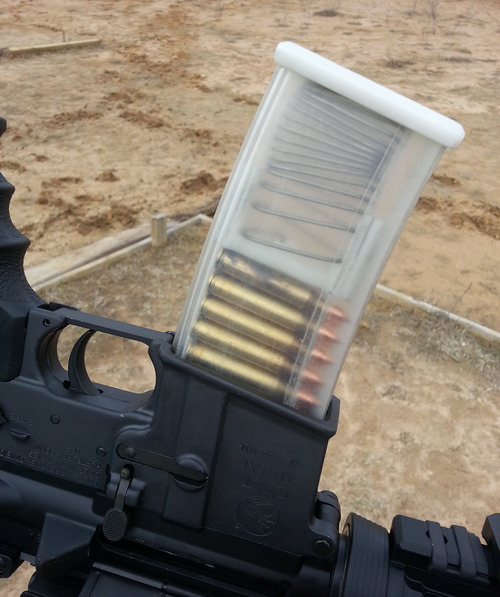 Just last year, the Bureau of Industry and Security began imposing Export Administration Regulations restrictions on printed guns, after they were removed from the US Munitions List.
Just last year, the Bureau of Industry and Security began imposing Export Administration Regulations restrictions on printed guns, after they were removed from the US Munitions List.
That’s not to say that these efforts have always been successful, as In 2018, the US Department of Justice actually overturned a ban on sharing gun files, but with the issue of 3D printed firearms continuing to be caught up in the debate around ghost guns, regulatory changes such as Biden’s could soon see them become more tightly-governed.
To stay up to date with the latest 3D printing news, don’t forget to subscribe to the 3D Printing Industry newsletter or follow us on Twitter or liking our page on Facebook.
For a deeper dive into additive manufacturing, you can now subscribe to our Youtube channel, featuring discussion, debriefs, and shots of 3D printing in-action.
Are you looking for a job in the additive manufacturing industry? Visit 3D Printing Jobs for a selection of roles in the industry.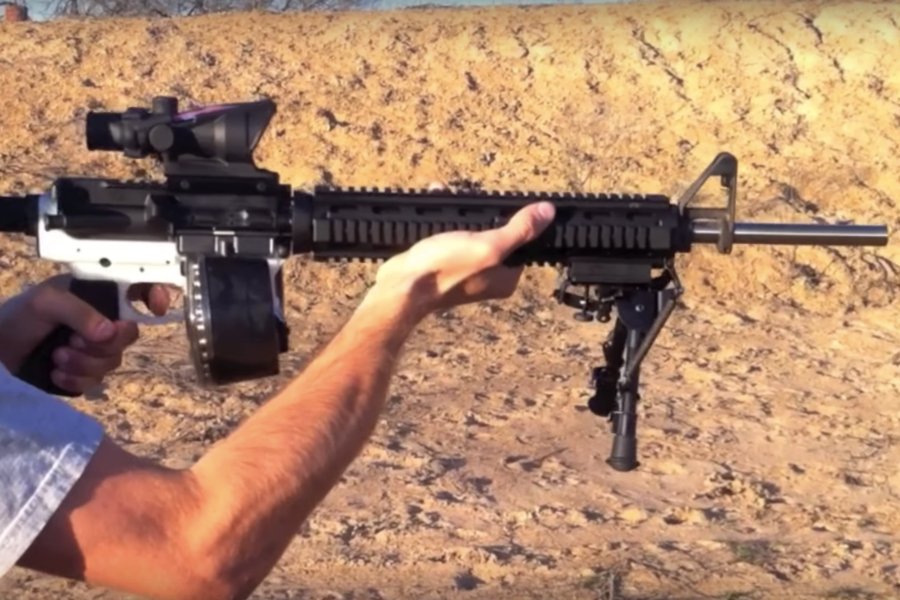
Featured image shows US President Joe Biden. Image via the White House.
Tags 3D Print General Engelberg Center on Innovation Law and Policy Erich Pratt Final Rule 2021R-05F Gunowners of America Michael Weinberg NYU School of Law President Joe Biden Sean Aranda US Bureau of Industry and Security US Department of Justice
Paul Hanaphy
Paul is a history and journalism graduate with a passion for finding the latest scoop in technology news.
Will criminals actively use 3D-printed firearms?
InoSMI materials contain only assessments of foreign media and do not reflect the position of the editors of InoSMI
American laws allow people to make their own weapons if they are intended for personal use. Anyone with mechanical and tool skills would be able to make uncontrollable firearms using parts that can be purchased without proper background checks. What will happen next?
Aamer Madhani, Andrew Wolfson
If gun rights advocate Cody Wilson gets his way in a legal battle, soon everyone, including convicted felons and mentally ill people, “With some raw material and access to an industrial 3D printer, he could make plastic firearms,” says gun control advocates.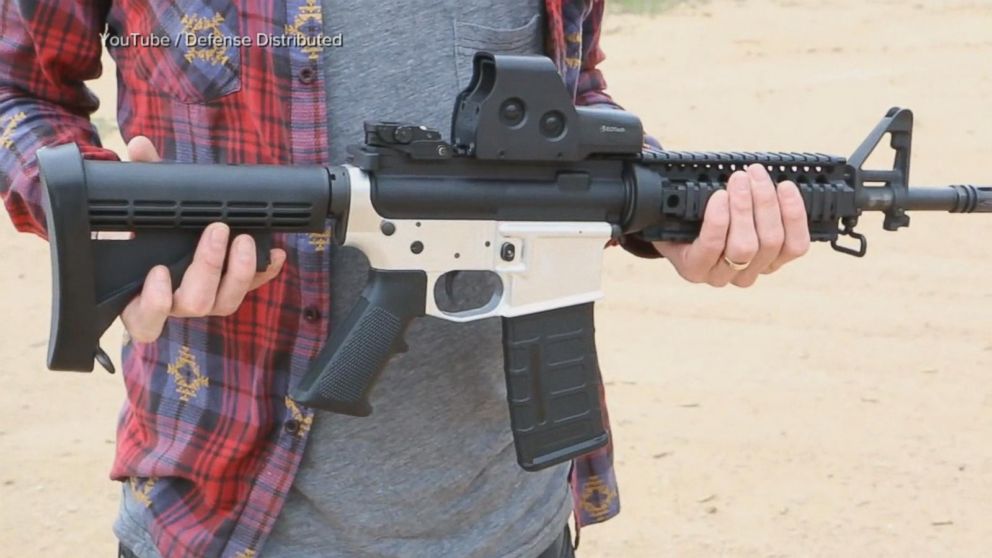 But would people, especially criminals or those who intend to commit violence, want to print such a pistol or rifle for themselves?
But would people, especially criminals or those who intend to commit violence, want to print such a pistol or rifle for themselves?
Tech experts, as well as stakeholders in the gun control debate, are divided over whether 3D printed plastic firearms are an immediate threat to the safety of Americans.
Today, a federal judge in Seattle issued a temporary injunction, effective until August 10, against Wilson posting the related drawings on his Defcad.com website.
Some 3D printer experts believe that even if Wilson wins his lawsuit, plastic weapons, at least for the moment, will not be considered practical. “It is not yet possible to 100% 3D print a weapon because the plastic used is not strong enough to withstand barrel loads or bullet burst,” said Michael Flynn, who owns the 3D printing company in Fort Worth, Texas.
A new chapter is now opening in America's gun control battle, while using 3D printing technology to produce reliable firearms is still in its infancy and is also costly.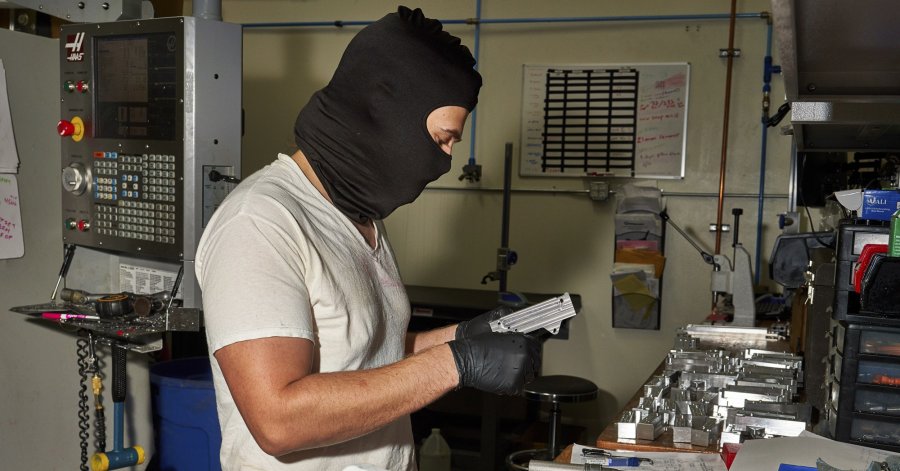
Industrial printers are priced between $20,000 and $100,000, and many printer rental companies explicitly forbid users from making weapons.
Wilson has been in a legal battle since 2013 and is trying to get permission to publish his drawings. During the Obama administration, the State Department forced him to stop publishing the drawings, but he filed a lawsuit seeking permission to return his drawings to the Internet.
The State Department advised Wilson that the distribution of such blueprints may constitute a violation of the Arms Export Control Act, which authorizes the President to control the import and export of self-defense weapons, the provision of defense services, and to regulate related exports and import.
Numerous courts have ruled in favor of the Obama administration, but Donald Trump's victory in the 2016 presidential election opened up new prospects for Wilson.
Last month, the State Department approved an agreement that allows Wilson (who claims the executive order violates his First Amendment rights) to post his blueprints from Aug. 1.
1.
Prior to that date, Senator Bill Nelsen, Democrat of Florida, attempted to pass a bill that would make it illegal to publish a digital file of software that allows a 3D printer to make firearms. The bill was blocked by Utah Republican Senator Mike Lee, who voiced concerns about the violation of First Amendment rights. Gun control advocates and some high-profile politicians—including attorneys general from eight states and the District of Columbia, who have sued the government to ban these blueprints from being posted online—have said homemade plastic firearms without a serial number can help. terrorists and poses a threat to society. Critics are concerned that the availability of 3D-printed firearms will open up a legal route for felons and others who are prohibited from owning guns to get their hands on them.
Federal law requires any firearm to contain at least 104 grams (3.7 ounces) of steel in order to be detected by detectors. Proponents of gun ownership point out that manufacturers can easily get around this obstacle by adding a single removable metal component.
Linda Teplin, professor of psychiatry at Northwestern University who studies the correlation between gun violence, public health policy, and the criminalization of mentally ill people, noted that the publication of blueprints for the production of firearms using a 3D printer can lower the weapon availability bar. In her opinion, attackers will then be able to take advantage of the "confusion" that has arisen.
“No restrictions, identity verification, or serial number? In this case, firearms will become available to everyone - even children - who can use a computer and a 3D printer. We cannot contain the epidemic of gun violence if we make guns more accessible,” Teplin said.
The possible emergence of a growing number of guns without a serial number is a problem for law enforcement, gun control advocates say. Last year, the Bureau of Alcohol, Tobacco, Firearms and Explosives used the serial number of weapons in their work more than 400 thousand times.
“Whether the weapon of violence is a firearm, truck, or other device, criminals don’t want to end up behind bars because of a serial number,” said David Chipman, a former employee of this Bureau who is currently He is currently a political advisor to the Giffords gun control organization.
American law allows people to make their own weapons if they are for personal use. Anyone with mechanical and tool skills can make uncontrollable firearms using parts that can be bought without proper background checks.
David Prince of the Eagle Gun Range in Farmers Branch, Texas, said the 3D printer makes it easier to make firearms, but he doubts people will rush to buy the equipment and start making their own. pistols.
“You can't get through the metal detector anyway,” he said. You still need to have ammo. And the metal they contain will be detected.”
Flynn, who owns 3D printer company Fort Worth 3D, thinks it makes more sense to use 3D printers to produce accessories such as magazines and stocks, rather than entire pistols or rifles.
According to him, he turned down a potential client who wanted a special bump stock device for converting a semi-automatic rifle into an automatic one. This device (it was used last year in Las Vegas, when 58 people were killed) allows automatic machine gun fire.
Others in the 3D printer field doubt that someone who is banned from acquiring firearms would try to overcome all the difficulties and print a gun when it is easier and cheaper to buy it from a private gun dealer or from an illegal gun shop. dealer who will not conduct identity verification.
“There is no reason to fear 3D-printed weapons more than conventionally-produced… firearms,” is the conclusion of the 3D printer sales website all3dp.com.
Kris Brown, co-chair of the Brady Campaign and the Center to Prevent Gun Violence, says non-marking 3D printed weapons will 'immeasurably' increase gun violence in the United States, where gaps already exist in the permit procedure.
"This will greatly increase the threat, and after that it can no longer be put back into the bottle," Brown said.
Jason Whitely contributed to this article
can airguns and firearms be printed
Is it possible to make a gun on a 3D printer and is it legal?
Today's 3D printers offer enormous possibilities.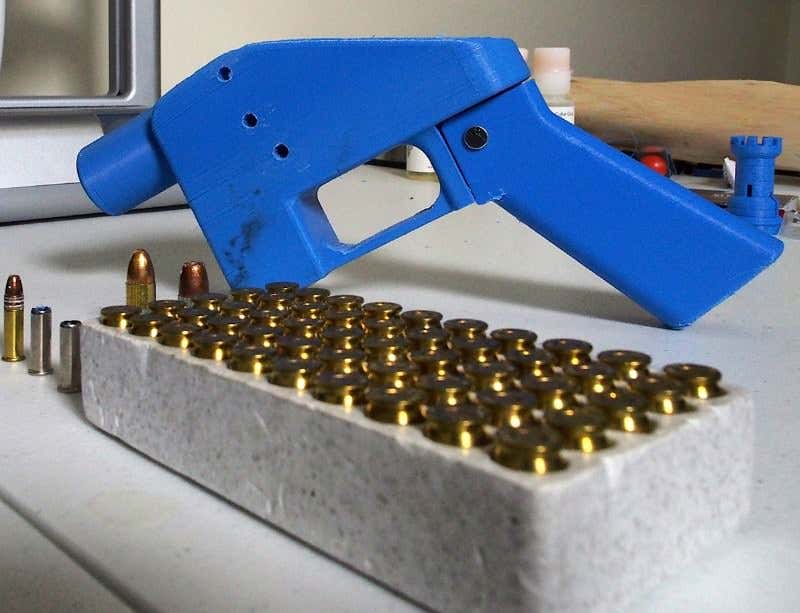 They can print products of almost any complexity. Until quite recently, it was difficult to even imagine that a plastic weapon could shoot. However, it is already possible to make a pistol on a 3D printer, which, although not reliable, still fires live ammunition.
They can print products of almost any complexity. Until quite recently, it was difficult to even imagine that a plastic weapon could shoot. However, it is already possible to make a pistol on a 3D printer, which, although not reliable, still fires live ammunition.
Can firearms be 3D printed?
Back in 2013, a young American activist for the free sale and distribution of weapons proved that plastic weapons can be printed on a 3D printer. He was the first in the world to make a pistol in this way, in which only the striker was made separately from metal. All other parts were printed on an FDM printer.
Today's 3D printers are capable of printing any CAD model, and these models of firearms have been available for over 10 years. If in previous years their printing required professional skills, now almost any user can master them. With a 3D printer and a finished model, it became quite possible to print a gun. Another thing is that such "creativity" is punishable by the laws of most countries.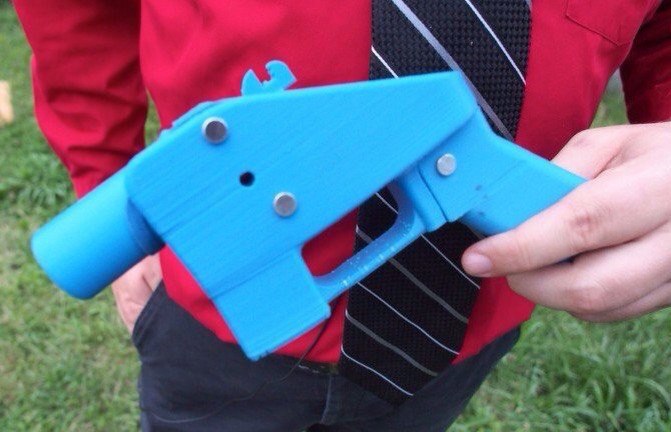
The evolution of 3D printed weapons
Despite all the prohibitions and restrictions, the evolution of 3D printed firearms is moving at a great speed. The beginning was laid by the single-shot plastic pistol Liberator by American K. Wilson, which appeared in 2013. It had a simple design and was chambered for 380 ACP. Already after 10-12 shots, this weapon became unusable. However, the very possibility of printing firearms served as an impetus for the development of the idea. The author of the first pistol himself founded the Defense Distributed company, which began to actively improve the technology.
One of the ways to increase the durability of weapons was to increase the number of their barrels. At the beginning of 2014, the Japanese Y. Imura makes a 38 caliber Zig Zag pistol. He was able to fire up to 6 shots non-stop. The author of the weapon was recognized as a criminal and convicted.
The next step was the production of a six-shot revolver by J.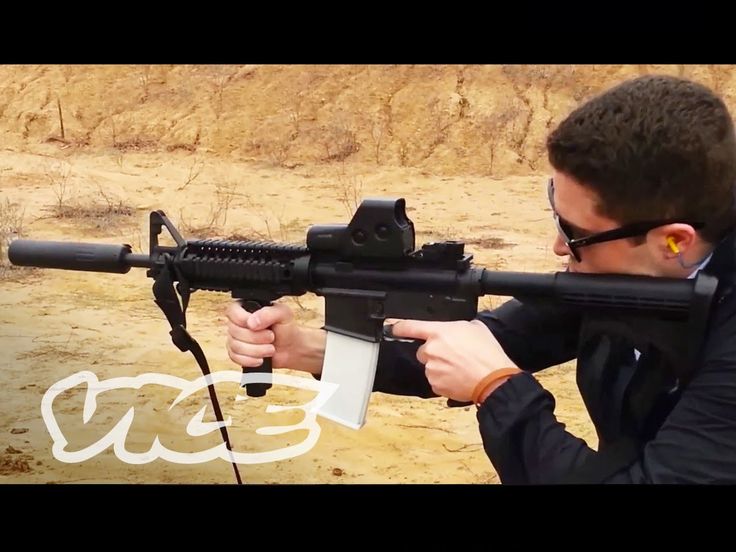 Patrick in 2015. The PM522 Washbear has been shown in action on YouTube. The weapon was noticeably safer for the shooter compared to previous versions, but still allowed to fire only a few dozen rounds.
Patrick in 2015. The PM522 Washbear has been shown in action on YouTube. The weapon was noticeably safer for the shooter compared to previous versions, but still allowed to fire only a few dozen rounds.
The first semi-automatic pistol for a 9 mm bullet appeared in 2016 under the name Shuty-MP1. It was developed by a handicraft gunsmith who hid under the pseudonym Derwood. It wasn't exactly a plastic weapon. The author used some metal parts from factory pistols - a barrel, a firing pin, a bolt and several springs. This made it possible to ensure a rate of fire of more than 46 rounds / min. However, when changing the store, the plastic case had to be cooled. In 2017, the same master proposed an improved model - Shuty AP-9.
The main contribution to the development of 3D printed weapon printing technology was made by Defense Distributed, which brought together a group of like-minded activists. First, these enthusiasts won legal proceedings in the United States and obtained permission to 3D-print weapons, which greatly expanded their capabilities. Secondly, they were able to set up a professional business with product testing and quality control. As a result, in 2018–19 they developed numerous models of a variety of firearms - from pistols to carbines. They posted over 30 files for printing original gun parts. Most of them were plastic, and the metal parts were not made from purchased, ready-made elements, but from simple metal profiles (tubes, strips, etc.), which are sold in ordinary hardware stores. This made it possible to exclude the use of parts patented by gunsmiths.
Secondly, they were able to set up a professional business with product testing and quality control. As a result, in 2018–19 they developed numerous models of a variety of firearms - from pistols to carbines. They posted over 30 files for printing original gun parts. Most of them were plastic, and the metal parts were not made from purchased, ready-made elements, but from simple metal profiles (tubes, strips, etc.), which are sold in ordinary hardware stores. This made it possible to exclude the use of parts patented by gunsmiths.
At the moment, the semi-automatic carbine FGC-9, developed on the basis of the Shuty AP-9, has become the pinnacle of "creativity" of Defense Distributed. At the same time, there is not a single factory part in it. The barrel for the 9 mm cartridge is made of steel pipe using electrochemical processing.
Where can I get drawings and what should I look for?
Gun manufacturing bans make it much harder to get blueprints and models of guns for 3D printing. The right to free placement of information was achieved only by Defense Distributed. Their website provides free access to drawings, models and technologies. Other information can be found on the Internet, but they are usually illegal.
The right to free placement of information was achieved only by Defense Distributed. Their website provides free access to drawings, models and technologies. Other information can be found on the Internet, but they are usually illegal.
When choosing a model, pay attention to the following information:
- material used;
- cartridge for which the model is designed;
- number of cartridges in the magazine, rate of fire;
- duration of operation before failure.
It is important to clarify which metal parts will need to be purchased separately, in addition to plastic for printing on a printer.
What does the law say in different countries?
The only country where firearms can be 3D printed is the United States. Gun Control Act 19 applies here68, giving Americans the right to make weapons, but only for personal use. Only one limitation is put forward: it must be determined by metal detectors, that is, it must have a metal element. In virtually all other countries, homemade manufacture and repair of weapons for any purpose is prohibited by law. In Russia, printing it on a 3D printer falls under the Criminal Code of the Russian Federation and is punishable by imprisonment.
In virtually all other countries, homemade manufacture and repair of weapons for any purpose is prohibited by law. In Russia, printing it on a 3D printer falls under the Criminal Code of the Russian Federation and is punishable by imprisonment.
Should we be afraid of plastic weapons?
The question of how dangerous a weapon printed on a printer is becoming increasingly important. Despite all the prohibitions, it is extremely difficult to control the spread of technology around the world. The availability of 3D printers and the increase in their functionality make it possible to master the production of plastic guns at home. How dangerous is such a weapon?
Most experts agree that currently printed weapons are more of an interesting toy. It is quite expensive and is designed to carry out only a few dozen shots. Moreover, such pistols are quite dangerous for the shooter himself with live ammunition, because they can explode in their hands.
However, the danger cannot be underestimated.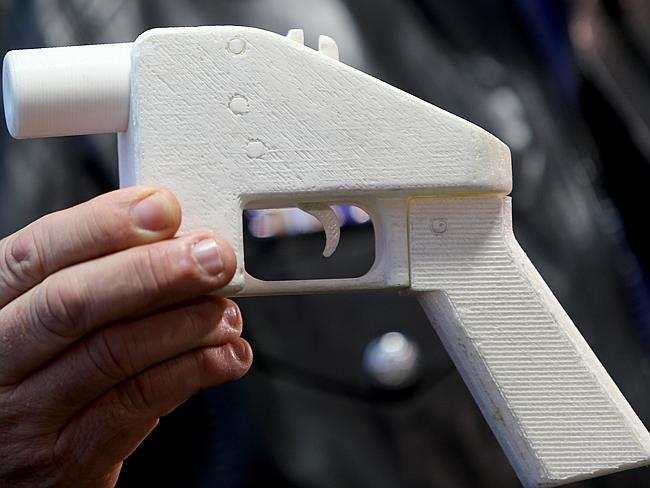 It is easier and cheaper for a "serious" criminal to buy illegal military weapons than to make them on a printer. At the same time, there may be "enthusiasts" who, for their own interest, can make a pistol and try it out in action. Such inadequate people represent an undoubted danger. In addition, the temptation is great for terrorists. Metal detectors do not detect a plastic gun, which means that it is easier to carry it, for example, on an airplane.
It is easier and cheaper for a "serious" criminal to buy illegal military weapons than to make them on a printer. At the same time, there may be "enthusiasts" who, for their own interest, can make a pistol and try it out in action. Such inadequate people represent an undoubted danger. In addition, the temptation is great for terrorists. Metal detectors do not detect a plastic gun, which means that it is easier to carry it, for example, on an airplane.
Important! Plastic weapons have a very small resource. At the same time, sometimes just one shot is enough to kill a person.
3D printed firearms have the following advantages:
- the ability to make military weapons at home;
- light weight;
- availability of materials;
- Ability to copy famous weapon models.
Always remember that there are significant disadvantages:
- illegal manufacture;
- high cost of weapons;
- very small resource and limited rate of fire;
- danger to the shooter himself.

Currently, plastic weapons have more disadvantages than advantages, and most importantly, you can get a real prison term for making them.
Prospects for weapon printing
The development potential of 3D printing of firearms is far from exhausted. The expansion of equipment capabilities and the development of innovative materials indicate that in the near future such weapons may approach military weapons in terms of characteristics. In the future - a significant increase in the resource and the provision of automatic firing.
Significantly increases the reliability of printed pistols and carbines SLS technology using metal powder. Such weapons already differ little from the factory metal models. While it is very expensive, which significantly limits the application. However, over time, the material will become cheaper, which means it will become more affordable.
Printing firearms on a 3D printer has become a reality. Despite its extremely low performance and reliability, interest is growing in it.